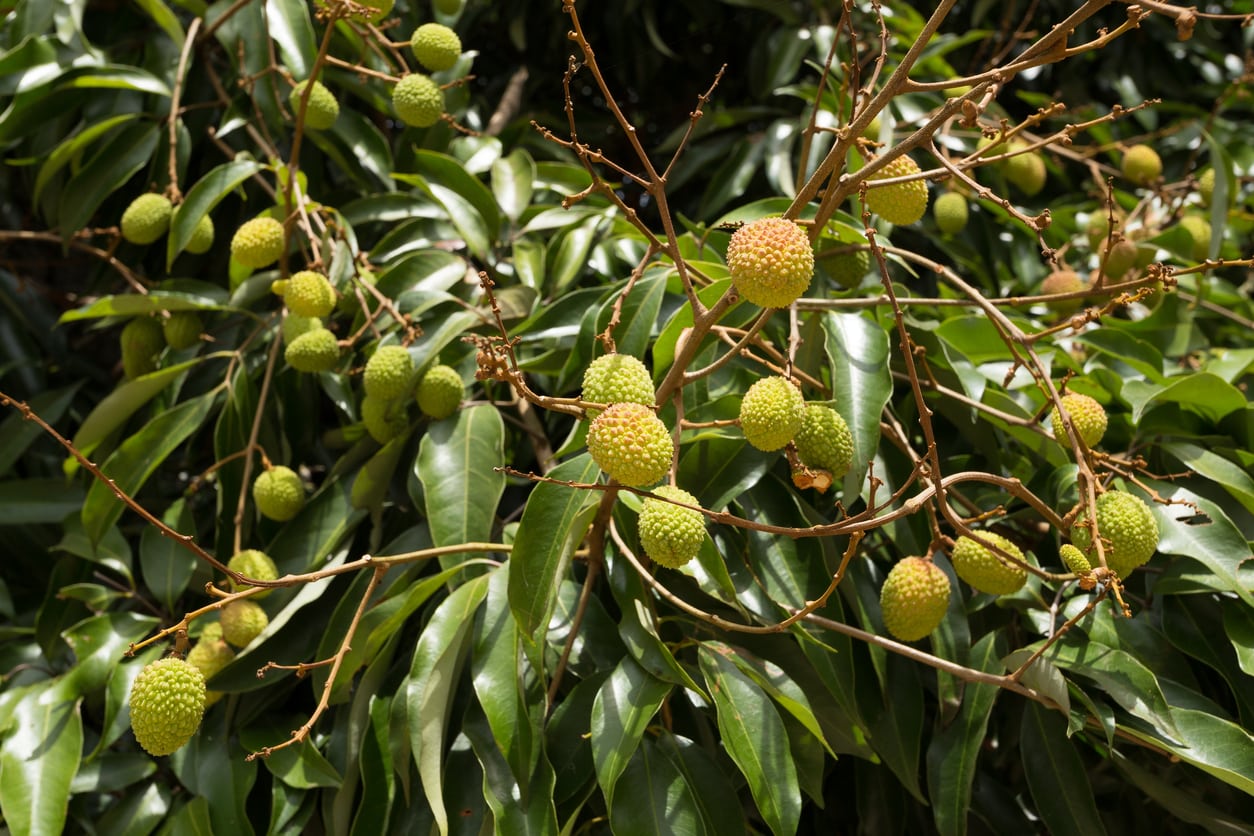Treating A Sick Lychee Tree – Learn How To Manage Lychee Diseases


Lychee trees, which bear sweet, red fruits, are gaining popularity in subtropical home gardens. While it is nice to grow different, unique plants in the landscape that not everyone else in the neighborhood is growing, you may feel completely lost and alone if problems occur on an exotic plant. Like any plant, lychee trees can experience certain disease problems. Continue reading to learn how to spot the symptoms of disease in lychee trees.
Symptoms of Disease in Lychee
Though the glossy, green foliage of lychee trees is resistant to many fungal diseases, they can still experience their fair share of disease related problems. Many of these problems stem from growing lychee trees in unsuitable locations. Lychee trees grow best in the subtropics where there are periods of warmth, but also periods of cool (not cold) weather. Lychee trees need a period of about three months of dry, cool (not freezing) winter weather for the plants to go semi-dormant and to control disease spread. Many of the fungal diseases that lychee trees can develop are caused by overly wet, warm, and humid winter conditions. If winter in a location is too cold for lychee trees, they may also display symptoms that resemble disease. When temperatures drop below 32 degrees F. (0 C.), lychee tree foliage may turn yellow or brown and wilt or drop. Fruit set can also be delayed or damaged by excessively cold periods. Before assuming that your lychee tree has a disease, consider what weather extremes it has been exposed to. If it has been unusually cold, it could just be winter damage. However, if it has been unseasonably warm, humid, and wet, you should thoroughly look for symptoms of disease in lychee trees.
Common Lychee Tree Diseases
Most of the common lychee tree diseases are caused by fungal pathogens. Generally, in fruiting plants or edibles, it is best to use preventative fungicide applications in early spring. How to manage lychee diseases, of course, depends on the specific disease, but many fungal diseases cannot be controlled by fungicides once they have produced symptoms. Therefore, lychee tree growers often use preventative lime Sulphur sprays just as lychee blooms form. Let’s take a closer look at common lychee tree diseases: Anthracnose– This fungal disease is caused by the fungal pathogen Colletotrichum loeosporioides. It can infect and cause symptoms in the foliage and fruit of the tree. Also known as pepper spot disease, symptoms of anthracnose on lychee fruit include small tan black raised lesions and/or a white fuzzy mycelium coating on the fruit. Foliage may display pink spores or dark, sunken lesions. Stem Canker– Caused by the pathogen Botryosphaeria sp., stem canker usually attacks the terminal branches of lychee trees. It causes oval or irregular shaped, sunken lesions on the branches, which may cause the bark to crack open. Preventative fungal applications can help manage the disease and infected branches can be pruned out, but be sure to sterilize your pruners. Pink Limb Blight– This fungal disease is caused by the pathogen Erythricium salmonicolor. Symptoms are pink to white lesions on and under the tree’s bark. As the lesions grow, they will girdle the limb, causing damage to the vascular system. Infected limbs will wilt, drop foliage and fruit, and die back. Preventative fungicides can help with pink limb blight, as well as pruning out infected tissues. Algal Leaf Spot– Caused by the fungal pathogen Cephaleuros virescens. The symptoms include greenish gray to rust red, watery, irregularly shaped lesions on the foliage and new shoots of lychee trees. It can also infect branches and bark. Algal leaf spot is controlled easily by lime Sulphur sprays. Mushroom Root Rot– This disease is usually only a problem in locations where lychee trees are grown amongst live oak trees. This disease almost always goes unnoticed until it has killed the tree by rotting its roots away. Symptoms of mushroom root rot mostly take place under the soil, until the overall wilting and sudden death of the tree occurs.
Sign up for the Gardening Know How newsletter today and receive a free copy of our e-book "How to Grow Delicious Tomatoes".

Darcy is a former contributor to Gardening Know How. She is a professional landscape designer and gardening writer with experience in plant sales. An avid gardener, Darcy has a passion for sharing practical tips to help others grow.